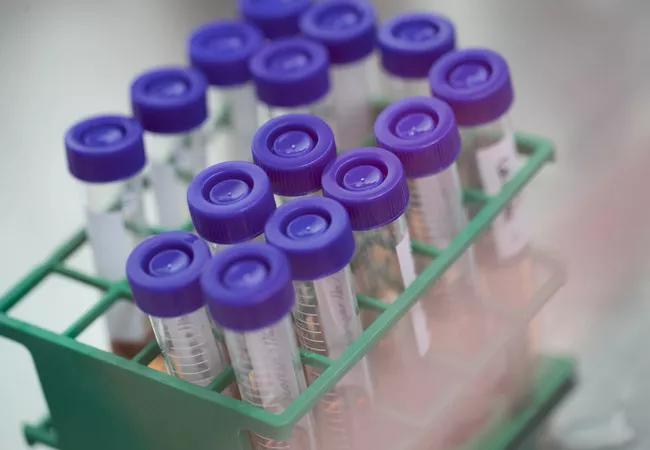Not all mutations are prognosticative

Aplastic anemia (AA) is a rare condition that occurs when bone marrow and the hematopoietic stem cells that live inside it become damaged and fail to produce new blood cells. In this disease, the body’s immune system attacks the stem cells and leads to bone marrow failure, which causes fatigue, prolonged bleeding from cuts, recurrent infections and other symptoms due to low blood counts.
Cleveland Clinic is a non-profit academic medical center. Advertising on our site helps support our mission. We do not endorse non-Cleveland Clinic products or services. Policy
The condition is treatable about 70 percent of the time, but a small number of patients with AA go on to develop clonal complications that can lead to myelodysplastic syndromes (MDS), a more serious condition and a type of cancer that can itself lead to acute myeloid leukemia.
Investigators have been searching for decades for particular genetic mutations which might predict which patients with AA will develop MDS. Now Cleveland Clinic researchers have discovered some of these “genetic seeds” of future MDS using next generation sequencing and inherent molecular diagnostics. They published their results in the September issue of the journal Blood.
“We found that mutations, which serve as seeds of future complications — the evolution to malignant conditions — can be traced very early on in the disease,” says Jaroslaw P. Maciejewski, MD, PhD, Chair of the Department of Translational Hematology and Oncology Research and senior author on the paper. “But only mutations in specific genes convoy this risk of evolution.”
In order to determine which mutations might be predictive of later MDS development, Maciejewski and his co-authors collected bone marrow and/or blood samples from 258 Cleveland Clinic patients with AA and 59 patients with paroxysmal nocturnal hemoglobinuria, another complication of AA. Among those patients, 35 progressed to secondary MDS. For comparison, they also assembled a cohort of 853 patients with primary MDS.
The researchers found that some mutations appeared and disappeared during the course of the disease. “Only certain ones of these mutations persist from AA to MDS, while other mutational events might come and go without seemingly predicting the future risk,” Dr. Maciejewski says. “And the ones that don’t convey the risk, they merely represent the damage to the stem cell compartment and how few stem cells are left in the marrow of aplastic anemia.” For instance, the analysis found a mutation of the gene DNMT3A occurred in some patients with AA but was absent in patients with post-AA MDS.
Maciejewski and his coauthors also serially analyzed a cohort of 21 AA cases that progressed to MDS and 13 that did not. They found more mutations of the genes ASXL1, U2AF1, and JAK2 in progressors than those who remain stable, which suggests that certain clonal events seen in the MDS stage of the disease were indeed acquired early at presentation of AA and that some early hits may lead to subsequent clonal evolution.
Finally, they found that among patients who with MDS-driver mutations at presentation of AA, there was shorter median progression-free survival, two years, and overall survival, 2.6 years, when compared with cases without these somatic alterations.
Dr. Maciejewski says the next step is to develop diagnostic procedures and validate them so that the identification of certain mutations would lead to therapeutic consequences such as the decision to proceed to bone marrow transplant or to avoid certain drugs. “If I could predict which patients with AA would develop MDS,” he says, “I would treat them so that these clonal cascades that lead to MDS did not occur.”

Large-scale joint study links elevated TMAO blood levels and chronic kidney disease risk over time

Investigators are developing a deep learning model to predict health outcomes in ICUs.

International collaboration is most genetically diverse study of the disease to date

Preclinical work promises large-scale data with minimal bias to inform development of clinical tests

Cleveland Clinic researchers pursue answers on basic science and clinical fronts

Study suggests sex-specific pathways show potential for sex-specific therapeutic approaches

Cleveland Clinic launches Quantum Innovation Catalyzer Program to help start-up companies access advanced research technology

Research project aims to pinpoint biomarkers that could speed diagnosis